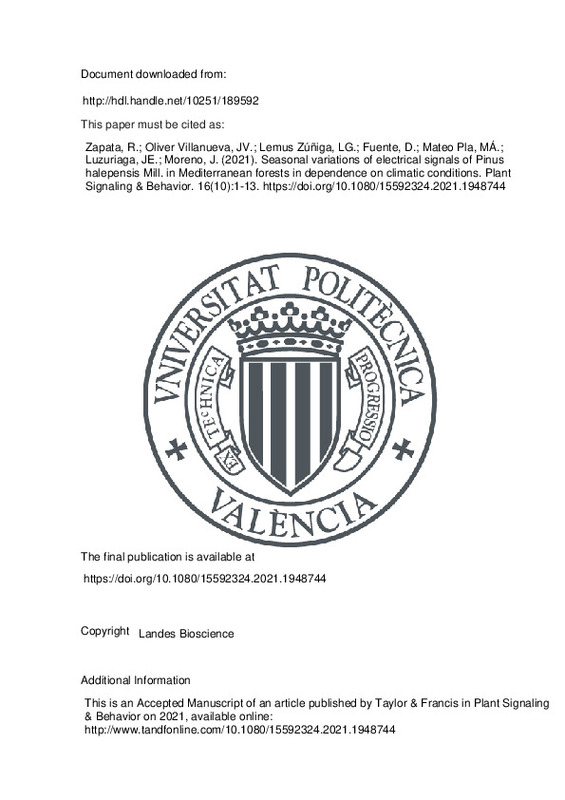|
Resumen:
|
[EN] The temporal evolution of the electrical signal generated by Pinus halepensis was measured in a sample of 15 trees. Weekly experiments were carried out during a long-term campaign lasting over a year, while trials ...[+]
[EN] The temporal evolution of the electrical signal generated by Pinus halepensis was measured in a sample of 15 trees. Weekly experiments were carried out during a long-term campaign lasting over a year, while trials with a high frequency of measurements were also performed during several days. In the latter case, day-night oscillations of the electrical magnitudes were observed. Additionally, punctual meteorological events such as rainfall and electrical storms affect the electrical signal as well.
The measured electrical intensity grows exponentially with the voltage. In fact, no electrical intensity that exceeds the threshold of 0.01 ¿A is gathered when voltage values are lower than 0.6 V. In general, higher electrical signals were gathered during the rainy seasons with moderate temperatures; while very low signals, including few measures of zero intensity, were obtained during the most stressful periods over the year, mainly by mid-summer.
There is a strong correlation between the rainfall and the electrical signal. The rain-intensity correlation, together with sustained intensity values during the reproductive period in spring, suggests that this electrical magnitude could be an indicator of the physiological state of the tree and thus used for in situ and minimally invasive forest monitoring.
[-]
|







![[Cerrado]](/themes/UPV/images/candado.png)


